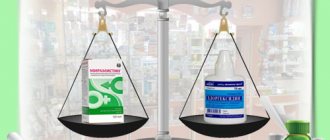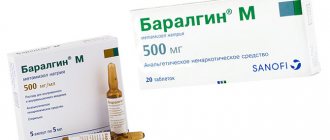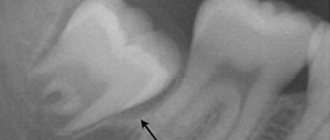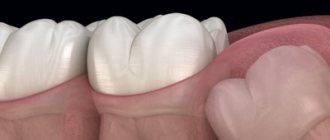Lipoma and skin atheroma are two common types of benign neoplasms. They require exceptionally attentive treatment, since in some cases (though, fortunately, not often) they can degenerate into malignant tumors. The appearance of atheroma may not cause suspicion - at first it usually does not cause much inconvenience. However, even if the tumor is not painful, you should still see a doctor. Often a lump (lipoma) on the neck or scalp gradually increases in size, in this case you need to visit a doctor urgently - the new growth will need to be examined to determine whether there is a risk of developing cancer.
Lipoma and atheroma are often similar in appearance, and patients often do not distinguish them from each other, defining them under the general name “wen.” Let's try to figure out what the difference is between a lipoma and an atheroma, and also what to do if you have one of these formations.
Lipoma
This is a benign formation consisting of adipose tissue. In essence, it is a local accumulation of adipose tissue under the skin. Lipoma is a benign tumor, although in rare cases, liposarcoma, a malignant formation, can develop under its mask.
Lipomas manifest themselves in the form of soft-elastic subcutaneous formations, mobile, painless, and can slowly increase in size. The skin over lipomas is not changed and easily moves over them. Small lipomas are not visible at all; they can only be detected by palpation. Larger lipomas stand out as “bumps” of round or oval shape. The size of lipomas is very variable - from 1-2 cm to 20 cm or more. Lipomas never become inflamed or suppurate.
How are atheromas and lipomas treated?
Atheromas are treated surgically; the type of operation will depend on the size of the formation. Small sebaceous cysts can be removed with a laser. Most often, atheromas are large in size and are removed with a scalpel. The “bump” on the skin is surrounded by two incisions, then the cyst is peeled out and removed along with a small piece of skin. Stitches are placed on the wound.
Atheroma cannot be cured by “sucking out” the contents with a needle and syringe. It is imperative to remove the walls of the stretched sebaceous gland - if they remain, they will begin to produce sebum again, and the cyst will grow again.
If atheroma suppurates, surgical treatment is performed, and the doctor may prescribe a course of antibiotics. Lipomas do not need to be treated. The operation is performed if:
- education is large and growing rapidly;
- the lipoma is in an inconvenient place and is constantly in the way;
- bothered by soreness;
- The patient himself insists on removing the lipoma.
Wen is removed in the classic way, using a scalpel. Relapses are possible, but extremely rare. Typically, atheromas and lipomas are removed on an outpatient basis; hospitalization is not necessary. Anesthesia is also not needed - local anesthesia is sufficient. The operation lasts on average 15–20 minutes.
Make an appointment by phone +7 (495) 120-08-07.
Atheroma
The origin of atheroma is fundamentally different from lipomas. Atheroma develops from the sebaceous glands of the skin. For various reasons, the gland duct becomes clogged, secretion accumulates in the gland, which gradually begins to increase in size. Atheroma is defined as a small (from 0.5 to 2 - 3 cm) formation, which always rises somewhat above the skin and is always fused to it (i.e. the skin above the atheroma does not move), and can grow slowly. Atheroma always has a capsule and contains atheromatous masses resembling crushed lard.
Because The atheroma is connected to the external environment by a duct; there is always a threat that it will become infected through the duct and suppuration will occur. In this situation, moderate pain appears in the area of the previously “quiet” atheroma, the formation quickly (over several days) increases in size, redness appears around it, and body temperature may rise. Suppuration of atheroma requires urgent surgery.
Reasons for appearance
There are many factors that influence the formation of lipomas. Among the reasons are hereditary predisposition, impaired metabolism of fatty acids in the body, liver disease, pancreatic disease, non-compliance or violation of hygiene rules.
For a long time it was believed that soft tissue injury predisposes to the development of lipomas, but this fact was subsequently refuted in research. Thus, doctors agree that one reason that would explain all the processes has not yet been found. However, predisposition to gastrointestinal lipomas has a proven connection with a gene mutation on chromosome 12. In other cases, the reasons remain unknown.
Symptoms
Identifying the problem in both cases is usually not difficult.
Signs of lipoma:
- mobile and painless, sizes can range from a few millimeters to 10-15 cm;
- to the touch - doughy or dense;
- not fused to the skin - the skin easily moves over the formation;
- never becomes inflamed – i.e. There is no redness or swelling of the skin above the lipoma.
Most often, lipomas are located on the limbs, head and torso; they are almost never on the face.
Preparation for the procedure
In case of subcutaneous lipoma removal, no special preparation is required. The mini-surgery is performed on an outpatient basis, meaning it does not require hospitalization. The surgeon performs all necessary manipulations under local anesthesia. Thus, the procedure is painless for the patient.
Giant subcutaneous lipomas, as well as neoplasms of the intestines, internal organs, and peritoneum require more serious and thorough preparation. Operations of this type are carried out with hospitalization of the patient. Before the intervention, samples are taken and, if necessary, additional studies are done. Operations performed under general anesthesia require restriction of water and food on the eve of the operation.
Symptoms of atheroma
The formation is in the form of a tubercle, painless, mobile, fused to the skin, you can often see the opening of the excretory duct of the gland. Most often, the “bump” is located on areas of the body where there is hair: on the face, scalp, in the genital area, on the legs, on the back, and is found on the face. If a suppurating atheroma appears, the formation increases in size over several days, the skin on the affected area may turn red and become painful, and the temperature may also rise.
How to remove wen using traditional methods
If it is not possible to visit a doctor’s office, you can try to remove the lipoma yourself. But this applies only to those formations that have appeared recently. If the lipoma is old, it needs to be treated only surgically.
Baked onion
Onions are considered one of the most effective means for removing wen. Do the procedure at least 2 times a day.
- Take one medium onion and bake in the oven.
- Grind the cooled onion using a meat grinder.
- Grate baby soap, add to onion and mix thoroughly.
- Apply the resulting mass as a compress to the wen.
Sour cream with honey
Before the procedure, you need to take a hot bath to steam the wen. Then the components of the prepared remedy for wen will better penetrate the adipose tissue of the tumor. Carry out the procedure every other day.
- Mix equal amounts of sour cream, honey and sea salt.
- Apply the resulting mixture to the problem area.
- After 20 minutes, rinse with warm water.
Treatment
Now that we have figured out the difference between a lipoma and an atheroma, let’s move on to the next question: is it necessary to remove the lipoma or remove the atheroma? Let's start with the fact that conservative treatment of lipoma, as well as treatment of atheroma, is absolutely futile. Moreover, aggressive influence on these formations using various “folk” remedies can cause suppuration of atheroma, as well as malignancy (malignancy) of lipoma.
Tactical approaches to the treatment of lipoma are as follows: if the lipoma is small (2-3 cm), does not grow and does not cause any inconvenience (does not rub against clothes, is not a cosmetic defect, etc.), then it does not need to be removed. In case of growth (especially rapid growth), it is better to go for surgery. If the lipoma grows, then sooner or later you will still have to remove it, but it is better to do this while it is small in order to avoid large incisions and traumatic intervention. Any removed lipoma should be sent for histological (under a microscope) examination.
As for atheroma, it is recommended to remove it in any case, because practice shows that sooner or later they fester, and during surgery against the background of inflammation it is not always possible to completely remove the atheroma capsule, which is fraught with relapse (reappearance of the formation). In addition, when suppuration occurs, the wound is almost never sutured; it heals by secondary intention, which often leads to the formation of a rough scar. If, after removing the atheroma, it turns out that the formation does not have a capsule and does not contain atheromatous masses, it should be sent for histological examination to exclude dermatosarcoma, which is sometimes similar in appearance to atheroma.
Diagnosis and treatment of lipoma at the JSC Meditsina clinic in Moscow
The clinic of JSC "Medicine" in the Central Administrative District of Moscow is ready to offer professional assistance to patients with suspected single or multiple cases of lipoma development. The center’s specialists have high-quality equipment and extensive practical experience in using various methods of removing a tumor focus. Each patient is guaranteed attentive attention, referral to a full course of examinations and an individual approach to developing lipoma treatment tactics. Appointments are available on the clinic’s website and by calling the numbers provided.
To sum up all of the above, we can say
- Lipoma and atheroma are benign formations of different natures - lipoma simply consists of altered adipose tissue, and atheroma is made of a sebaceous gland with a capsule filled with secretion - sebaceous atheromatous masses.
- Conservative, incl. Treatment of lipoma with folk remedies, as well as treatment of atheroma, is absolutely ineffective and often harmful.
- A small (2-3 cm) lipoma can not be operated on, but observed. In case of growth, as well as any discomfort, surgery to remove the lipoma is indicated.
- Removal of atheroma is always desirable, because they tend to increase in size and fester.
- If you find a subcutaneous formation in yourself, you need to consult a doctor, because... under the guise of a lipoma or atheroma, other formations can develop - dermatosarcomas, liposarcomas, hygromas, lymphadenitis, etc.
Dr. Elshansky I.V. has been involved in the diagnosis and surgical treatment of benign formations of the skin and subcutaneous tissue for many years.
Advantages and disadvantages of various methods
- Lipoma excision.
Excision of a lipoma is the simplest and most affordable way to remove a wen. The operation is performed under local anesthesia. The surgeon injects the lipoma with an anesthetic and removes the tumor along with the capsule through an incision in the skin. Removal of the fibrous capsule is an undeniable advantage of this method. This prevents the re-formation of lipoma in the old place, which means it reduces the risk of relapse to a minimum. This method also allows one to examine the histological structure of the tumor. In general, the operation lasts no more than half an hour.
- Liposuction.
Liposuction allows the tumor to be removed through a small hole. A special device is inserted into the cavity of the wen, which destroys the lipoma. Many doctors and patients love this method for its minimal invasiveness and good cosmetic results. However, the disadvantage is the inability to remove the fibrous capsule of the wen, which creates the possibility of future relapse of the tumor.
- Laser removal.
Laser techniques are used to eliminate tumors larger than 3 cm. The method is gentle, carries minimal risks of bleeding and infection, and does not leave wounds or scars.
How a doctor can help you remove a wen
It is highly advisable that lipoma removal be performed by an experienced specialist. After a thorough examination, a dermatologist may prescribe the following procedures to remove wen:
- Mechanical cleaning. This method is considered the simplest. The procedure is carried out by piercing the wen with a needle, after which all its contents are removed. Sometimes the procedure is performed under local anesthesia.
- Removal of lipoma with laser . Laser therapy is considered the most progressive method for removing fatty tissue. The procedure is very quick and does not leave scars. In addition, the possibility of the wen reappearing in the same place is excluded.










